We took the new road from Dali to Lijiang, arriving in the World Heritage-designated town in late afternoon. Most of our Beijing friends, both foreign and Chinese, have visited Lijiang – some of them multiple times - and all of them have raved about it.
| Its charms come from being located far off the beaten path of centuries of rule from the north. As a result, the town’s ancient cobblestone streets and carved-wood houses have been well-preserved. |  |
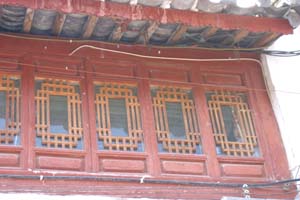 |
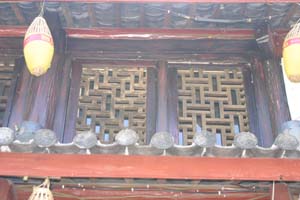 |
| It’s also famed for the canals running through the streets, carrying ultra-pure water from the surrounding mountains. | 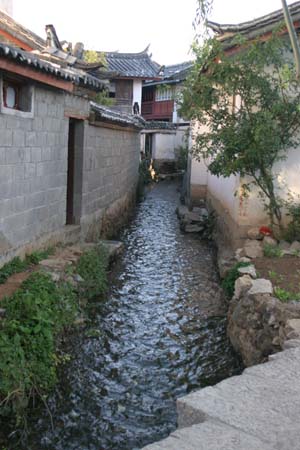 |
A huge earthquake in 1996 devastated many of the more modern structures; seeing that the traditional buildings withstood the quake quite well, the local leaders decided to rebuild in the old style. It’s not clear today which buildings are truly ancient and authentic, but the overall effect is beautiful.

Like one of the old walled towns in the French countryside, Lijiang is a lovely place to relax and wander around.
Of course, modern China hasn’t left Lijiang untouched.
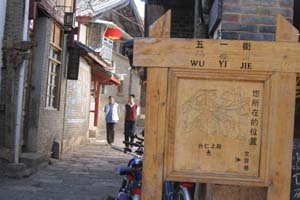 |
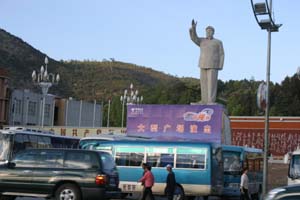 |
Like every other Chinese city, town, village and hamlet, Lijiang boasts a May 1 street (a Communist holiday worldwide) as well as a statue of Mao in a central location. With all the tour buses parked underneath, it looks like he’s directing traffic! Can we get a few more of those statues in Beijing?!
Lijiang is nestled under the famed Jade Dragon Snow Mountain, a spectacular peak that towers over the other mountains in the ranges surrounding Lijiang.
| Jade Dragon is the source of the clean, clear water that runs through Lijiang’s canals. One of the town’s most famous sites is a beautiful park featuring a clear view of the peak and an abundance of natural springs which many people visit every day to collect drinking water for their homes! | 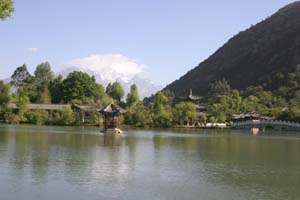 |
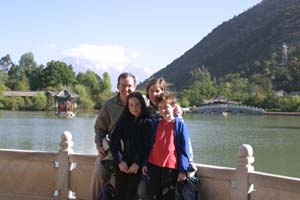 |
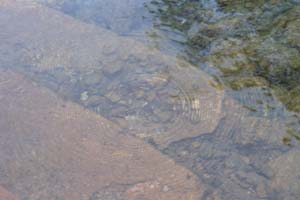 |
| We posed with the peak, and watched people fill their bottles and jugs at the Pearl Spring. | 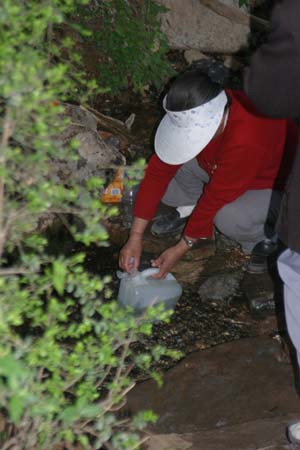 |
We also had to snap some shots of superb examples of Chinglish for our collection.
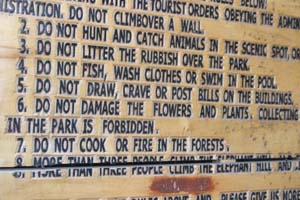 |
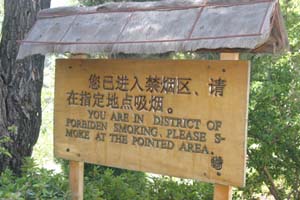 |
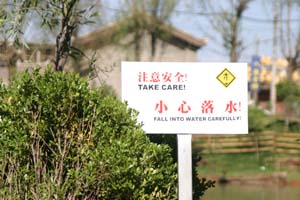 |
Besides its buildings, Lijiang has also earned World Heritage recognition as the home of one of China’s most fascinating and fast-vanishing minority cultures, that of the Naxi people. Lijiang was once the capital of the Naxi kingdom in Yunnan, which was subdued by Kublai Khan over 700 years ago. Despite a rapid influx of Chinese, both tourists and merchants who serve them, the Naxi – at least, the older generation – still maintain many of their customs. Older Naxi women dressed in traditional garb are a common sight in Lijiang.
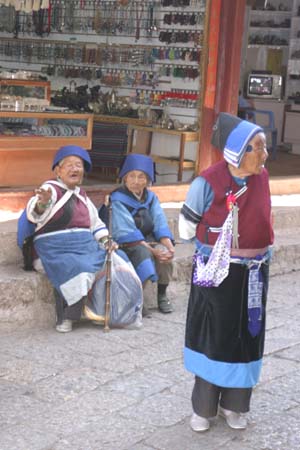 |
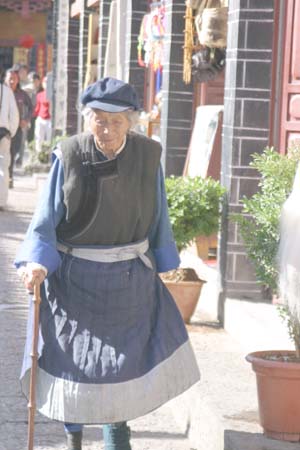 |
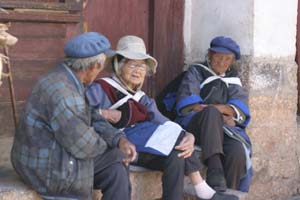 |
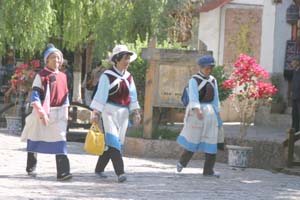 |
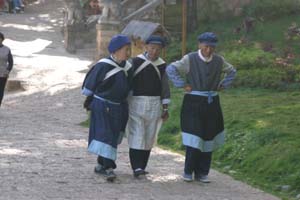 |
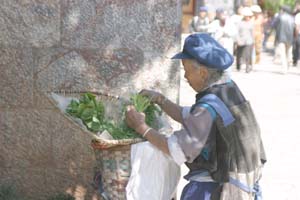 |
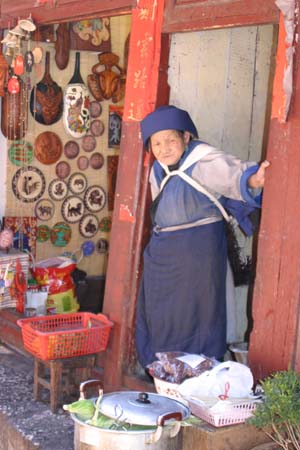 |
While other minority peoples in China wear bright colors and loads of jewelry, the Naxi costume is plain. One distinctive feature is the seven circles on the back of the cape women wear as a back-pad or sit-upon.
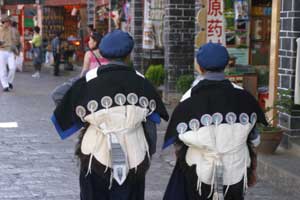 |
 |
Huang explained that the circles represent the seven stars in the big dipper – the strings represent “rays” of light – conveying two meanings: first, that the Naxi, like other agricultural societies watch the sky closely to help them order their planting and harvesting calendar.
Also, women wear them as a subtle, but proud signal of their hard-working nature. As Huang said, “They leave the house in the morning to work the fields when it’s still dark and the stars are in the sky, and by the time they return home, the stars are out again.”
Next: Naxi Dancing